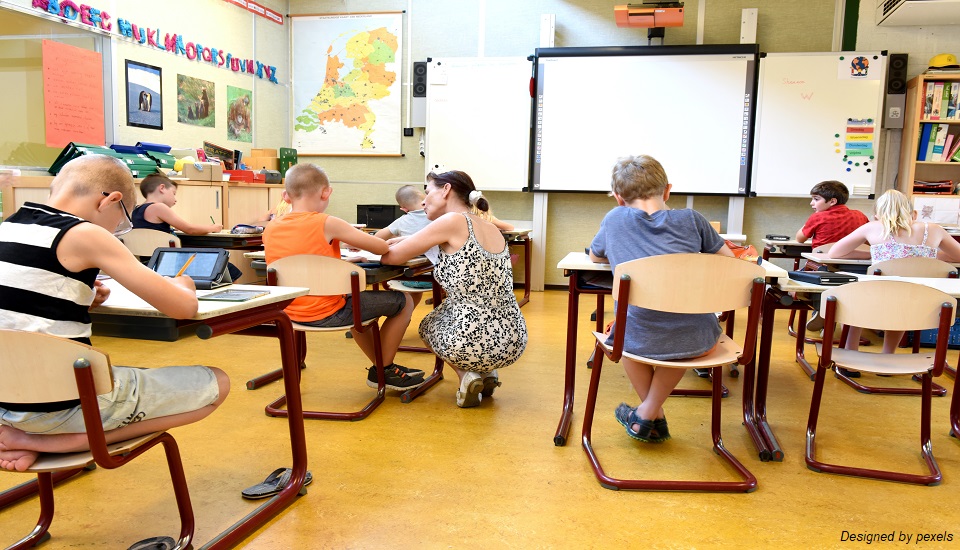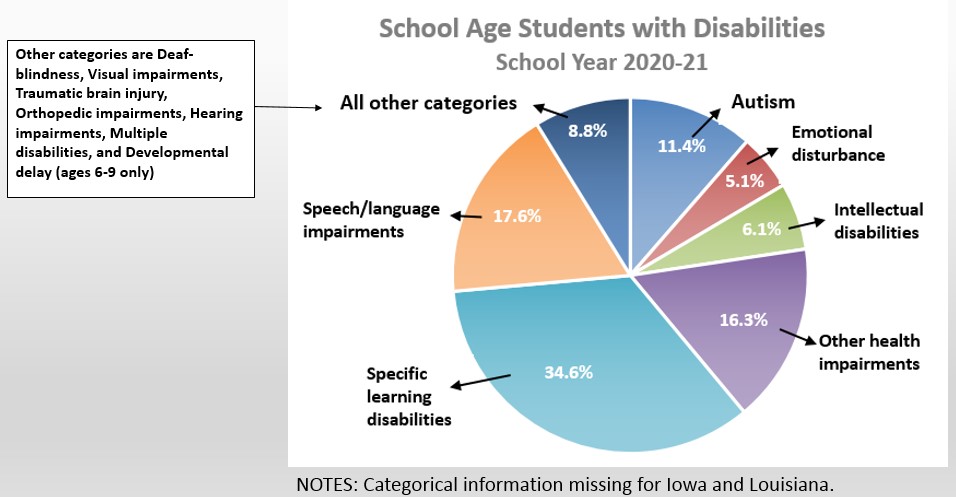Effective Ways to Identify & Supporting English Language Learners (ELLs) With Learning Disabilities
31st July 2023

Learning anything new is always a tough task for every child and especially for those children who have learning disabilities. According to a survey by advocayinstitute.org, 34% of the students have specific learning disabilities.

Those English Language learners (ELLs) with learning disabilities face different challenges compared to the other students in the classroom. Because they not only have to find a way to learn a new language but also struggle to cope-up with their cognitive related, processing related, and paying attention-related difficulties simultaneously which ultimately affects their ability to learn a new language.
To support English Language Learners (ELLs) With Learning Disabilities in their learning journey is not an easy task because those learners not just struggle with language acquisition but with all the basic reading, writing, listening, or speaking tasks, and with they also struggle with processing information as well. However, those teachers who have pursued courses like Online Learning Disabilities Course for Teachers know really well how to support ELLs with Learning disabilities.
There’s no need to worry because we have created this blog post which will cover some effective strategies for teachers with which they can support ELLs with Learning disabilities to achieve success academically.
Before moving to the topic, can we ask you a question? Do you follow us on Social Media? We regularly share upgraded educational content, tips, feedback, and more. Check us out by clicking the profiles here - Facebook / Twitter / LinkedIn / Pinterest / Instagram / YouTube
So, without any further delay, let’s get started.
Strategies to Identify English language learners (ELLs) with Learning Disabilities
Identifying English learners with learning disabilities can be a complex process, as language barriers can make it difficult to assess their true abilities. However, there are several strategies that can help educators identify these students and provide them with the support they need. Like-
1. One effective strategy is to conduct a comprehensive assessment that includes both language proficiency and academic achievement measures. This can help identify any significant discrepancies between the student's English language skills and their academic performance, which may indicate the presence of a learning disability.
2. Another strategy is to gather information from multiple sources, such as parents, previous teachers, and specialists. They can provide you with information that will give you a clear idea of their learning difficulties in the past or if they have faced any other challenges in the past or not.
3. Lastly, Teachers can closely observe their classroom to find whether any student has the traits of ELL with disabilities. For ex- Having trouble reading, speaking, etc.
After identifying those ELL learners with a disability, it’s time to know how you can support them to achieve success in academics and in life.
4 Ways to Support English language learners (ELLs) with disabilities
1. Differentiating Instruction for English language learners (ELLs) with disabilities
English Language Learners (ELLs) with disabilities have different needs compared to other learners, so according to that teachers need to modify their teaching style to meet their needs. Teachers can start by modifying their teaching method, teaching material, and assessments to make sure that those learners can fully engage in classroom learning and with the curriculum.
To support ELLs with disabilities teachers can use visual aids, such as- visual cues or graphic organizers which will help them to understand and process information easily. Teachers can also incorporate real-life examples and hands-on activities to make the learning content more engaging and meaningful.
In addition to modifying instructional materials, it is important to provide frequent opportunities for practice and reinforcement. English learners with learning disabilities may require more repetition and practice to master concepts. Teachers can also break down complex tasks into smaller, more manageable steps to support their understanding and progress. By creating instruction to their specific needs, teachers can help these students succeed academically and build their confidence.
2. Providing Support Services for English Language Learners (ELLs) With Learning Disabilities
English Language Learners (ELLs) With Learning Disabilities may require additional support services to address their specific needs. These services can include individual or small-group tutoring, specialized instruction, or accommodations such as extended time on tests or modified assignments. It is crucial for educators to collaborate with specialists, such as special education teachers or English as a second language (ESL) teachers, to develop and implement appropriate support plans.
3. Collaboration between teachers and specialists
Collaboration between teachers and specialists is key to providing comprehensive support for English Language Learners (ELLs) With Learning Disabilities. Regular communication and collaboration can ensure that these students receive the necessary accommodations and modifications to succeed in the classroom. By working together, teachers can share their expertise and develop strategies that meet the unique needs of these students.
4. Culturally Responsive Teaching for English Language Learners (ELLs) With Learning Disabilities
Culturally responsive teaching is an essential approach when supporting English Language Learners (ELLs) With Learning Disabilities. It involves recognizing and valuing the cultural backgrounds and experiences of these students and incorporating their cultural knowledge and assets into the curriculum. This approach helps create a positive and inclusive learning environment where students feel understood and supported.
Teachers can incorporate culturally responsive teaching by using materials and examples that reflect the students' cultures and experiences. They can also tap into the student's prior knowledge and use culturally relevant instructional strategies. Additionally, teachers should be mindful of cultural differences in communication styles and adjust their instructional methods accordingly.
By embracing cultural diversity and incorporating it into the classroom, educators can create an inclusive learning environment that promotes the academic and social-emotional growth of English learners with learning disabilities.
Teachers can Help English Language Learners (ELLs) With Learning Disabilities to Thrive
Every child is unique and special in their own way, they have different abilities and strengths compared to each other. When it comes to learning English then also the situation is the same because every child's progress or way of understanding or comprehending during learning is different, but it’s a little different in the case of ELL learners with a Learning disability.
ELL with Learning disability does not just struggle to learn the language but they also struggle with their cognitive and behavioural pattern and process the learning properly. However, those teachers who have pursued courses like Online Learning Disabilities Course for Teachers, know how to support those learners so they can thrive academically and in their personal life.
Moreover, with the above-mentioned strategies every teacher can support their English Language Learners (ELLs) With Learning Disabilities to succeed in their life as well.
Find the right course for you and try out the course. WhatsApp us at: +66-81-262-8832. You can also mail us at act@asiancollegeofteachers.com

